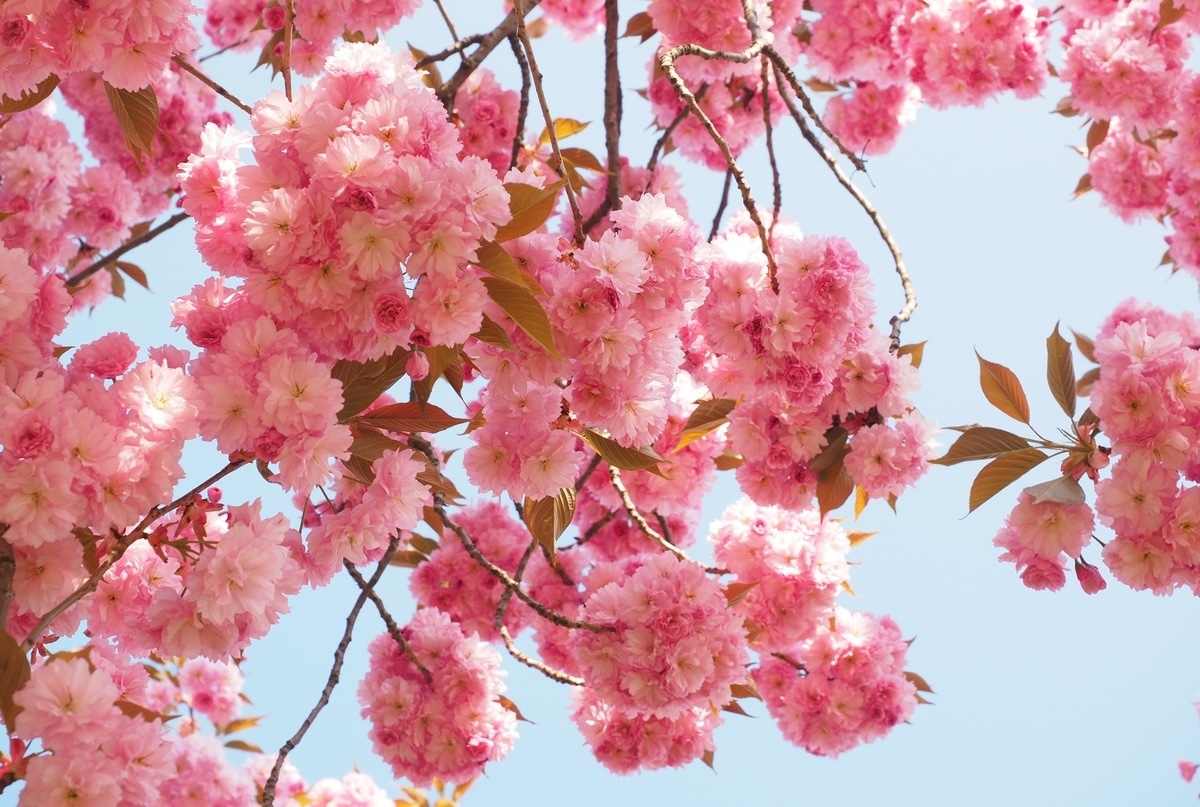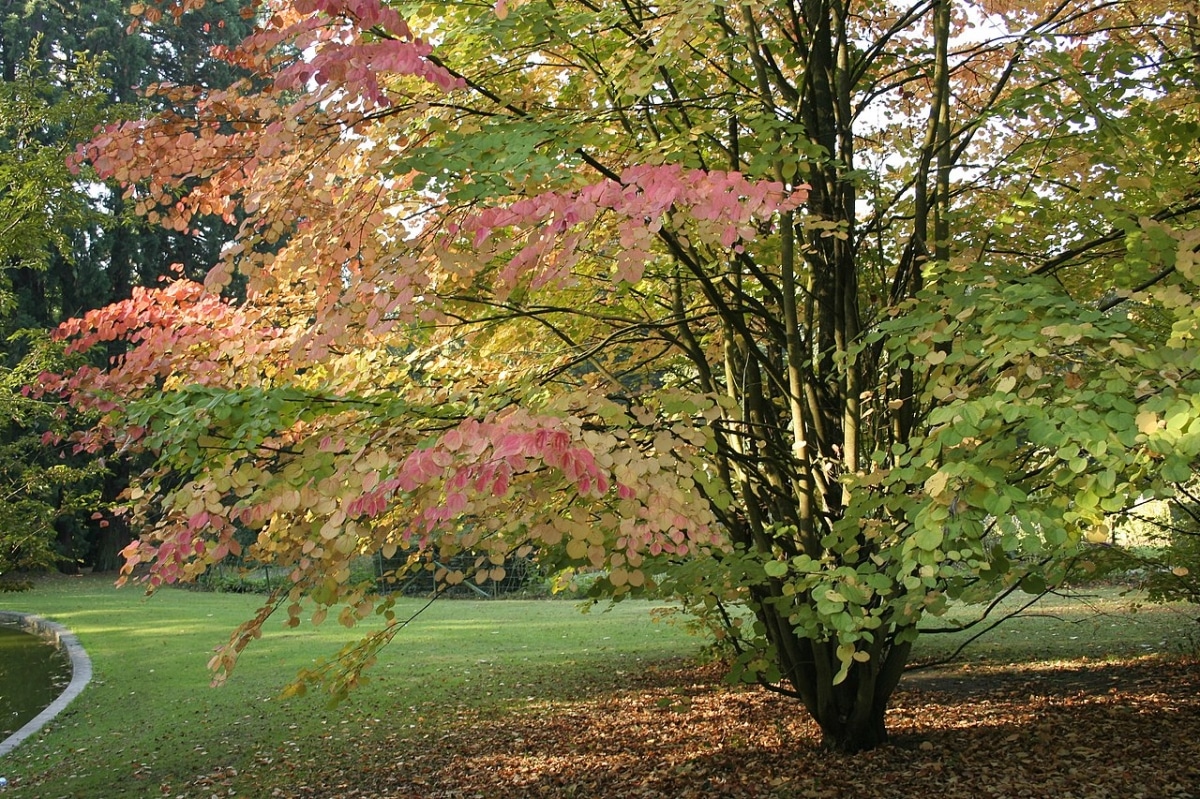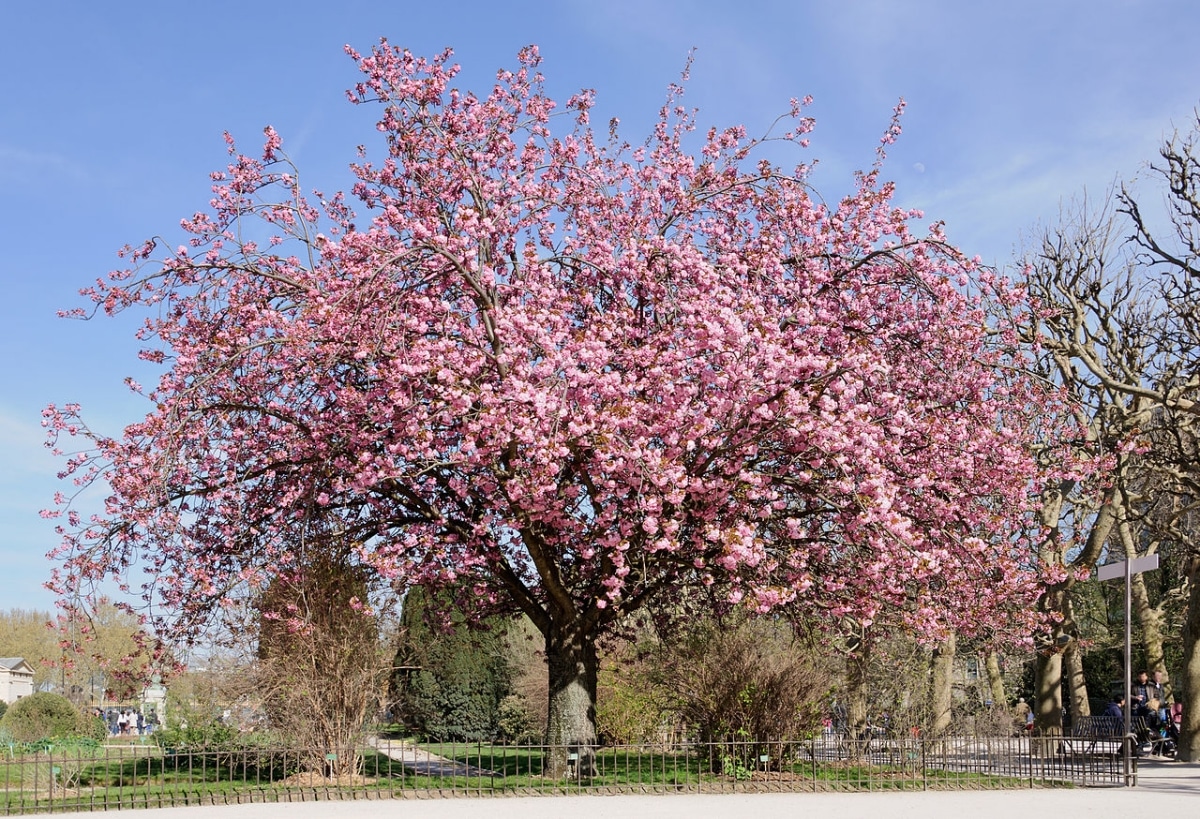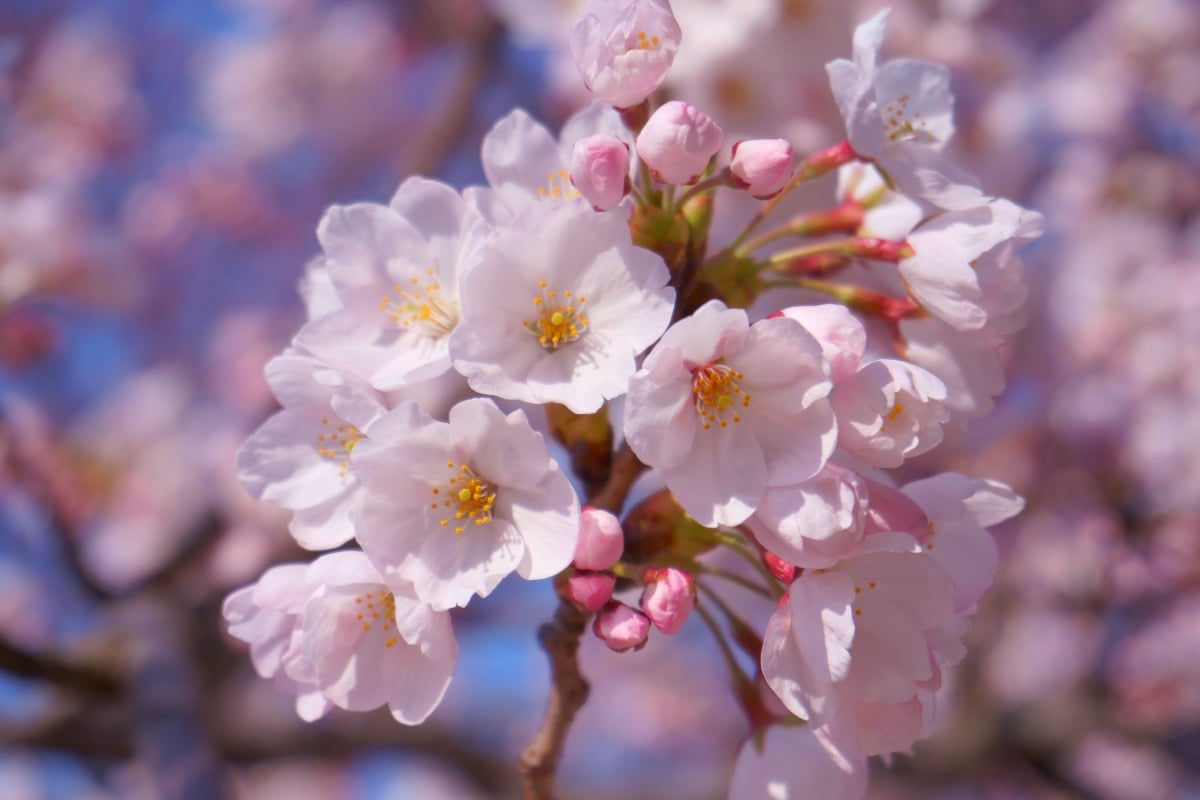
In East Asia there are trees that amaze more than one of us. One of the most popular is the one known as the Japanese pink tree. But, although searching the Internet reveals one in particular, I would like to tell you about some more that could also receive that name.
And it is that of course, the flowers can be pink, but there are also certain cultivars that have the leaves of some pinkish hue, or a soft red that is worth knowing. Thus, Here are the ones that, for me, are the most beautiful Japanese trees with leaves and/or pink flowers..
What are the pink Japanese trees called?
As you will see, there are few trees that are native to Japan and have pink flowers or leaves. But those that exist have an ornamental value that, we think, cannot be ignored. So without further ado, here they are:
Katsura Tree (Cercidiphyllum japonicum)

Image - Wikimedia / Jean-Pol GRANDMONT
El katsura tree It is a deciduous plant native to Japan and China that grows between 10 and 40 meters in height. Its growth rate is very slow, but its ornamental value is very high even when it is a young specimen: its leaves are round and green except when they are new, since then they are pink.
The flowers, both male and female, are also pink, although it is a darker shade than the one on the leaves. These sprout in spring, a little before the foliage does, and they are small.
Japanese cherry (Prunus serrulata)

Image - Wikimedia / Myrabella
El japanese cherry it is the quintessential pink Japanese tree, the first one that comes up when you Google images of that plant. It is native to Japan, but also to China and Korea. It reaches an approximate height of 6 meters, and develops a very wide crown, up to 5 meters in diameter., and dense, so it casts a nice cool shade.
Its flowers are certainly roses. They sprout in clusters during the spring, at the same time as the leaves. They measure about 2-3 centimeters, and are composed of five petals.
Prunus x yedoensis

Image - Wikimedia / 松岡明 芳
El Prunus x yedoensis it is a hybrid between Prunus speciosa y Prunus pendula f. ascend that originated in Japan. It is a deciduous tree that reaches a height of 5 to 15 meters., and develops a very dense crown with a diameter of up to 4 meters. The leaves are green, about 14 centimeters long by 7 centimeters wide, and fall in winter.
The flowers appear in clusters during the spring, before the leaves do. They do so by grouping themselves in clusters, and they measure about 3 centimeters in diameter each. In addition, they are fragrant, and can be white or pink.
How is the Japanese rose tree cared for?
Now that we know their names, we can talk about their care. And it is that this article would not be complete if we did not tell you what you have to do to keep them healthy, right? Well, here are a few general tips that we hope will help you enjoy your plants a lot:
Location
The three trees that we have named you They are plants that have to be grown outdoors., since they not only withstand cold and frost, but also because they need to feel the change of season: the air, the rain, the heat, the cold, etc., is very important to them. Therefore, they should not be kept indoors.
However yes it changes the exact location: while the Prunus need to be exposed to direct sunlight, the Cercidiphyllum prefers a sheltered spot.
Earth

Image – Wikimedia/掬茶
The three They grow in soils rich in organic matter, and with good drainage.. Likewise, it is important that the soil is acidic or slightly acidic, since in alkaline or calcareous soils they will have iron chlorosis, or what is the same: yellowish leaves as a consequence of the lack of iron.
Another option is to plant them in pots, but if this is done, they must be given specific substrates for acid plants; or even if you live in the Mediterranean region, rather than a conventional substrate we recommend mixing akadama (for sale here) with 30% kanuma, or put coconut fiber on them, as this will help them adapt better to the climate.
Subscriber
The Pink Japanese Tree will appreciate being paid during the growing season; that is, from when the flowers and/or leaves bloom in spring, until summer comes to an end. For that, you can add fertilizers for acid plants (for sale here), or fertilizers suitable for organic farming, which are all those that are natural, such as compost or guano, for example.
Pruning
We do not recommend pruning, unless they have a dry or broken branch, in which case it can be removed that same day. But if you consider it necessary, you can do it at the end of winter if it is a young tree, or after flowering.
Rusticity
the three trees They withstand frost and snow without problems (as long as they are not late). But they don't like extreme heat. In the Mediterranean, for example, they have a hard time if they are kept in places at a low altitude above sea level. On the contrary, in a temperate, mild, mountain climate, they may be fine.
Did you know the pink Japanese tree?